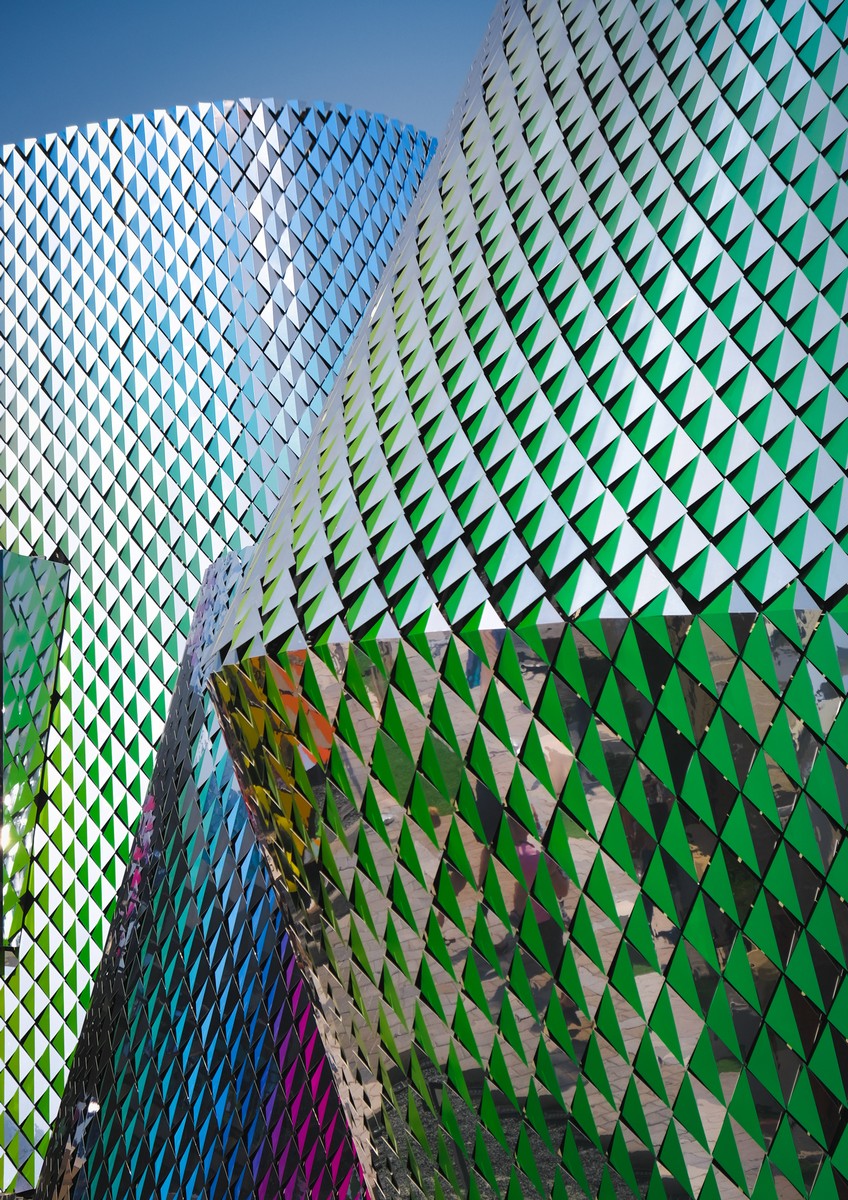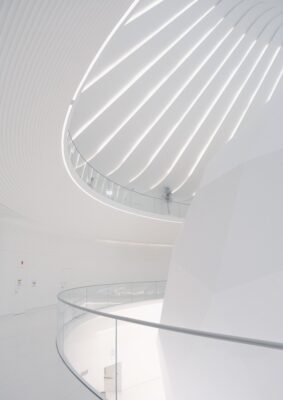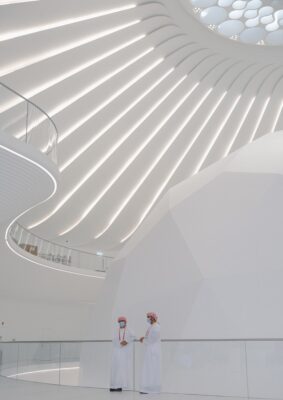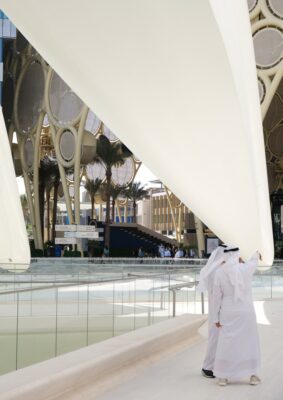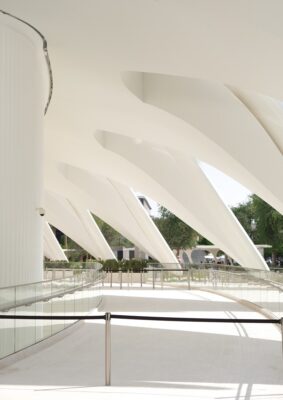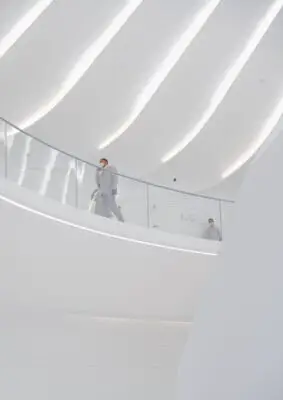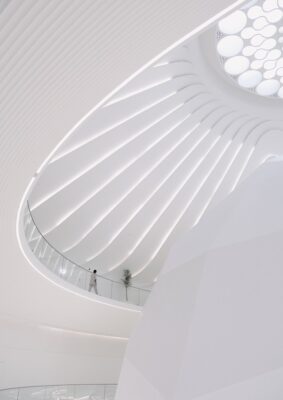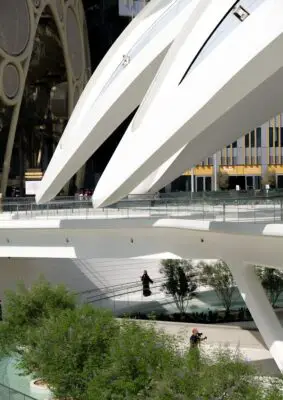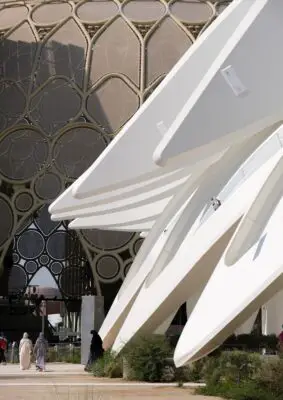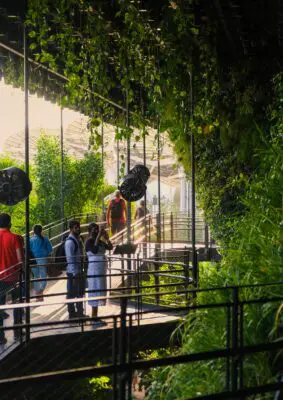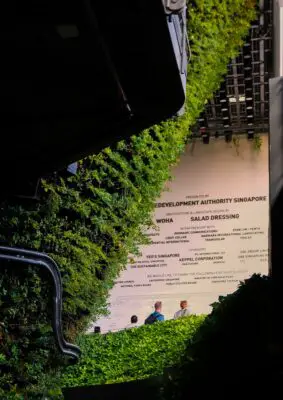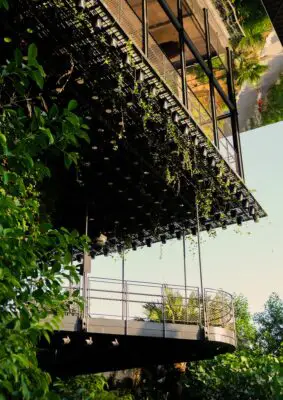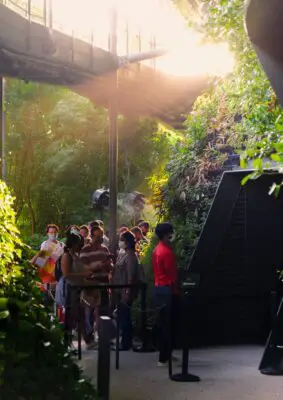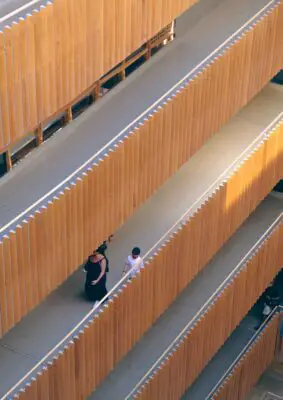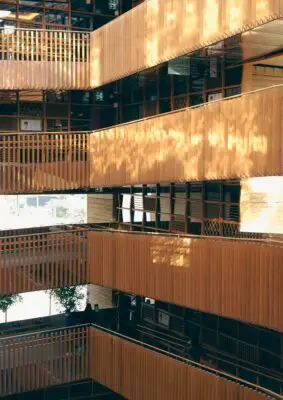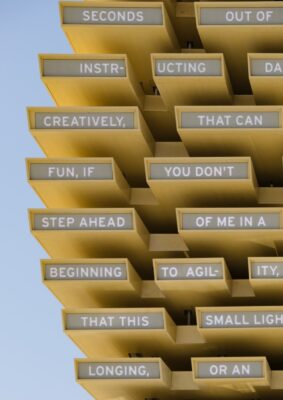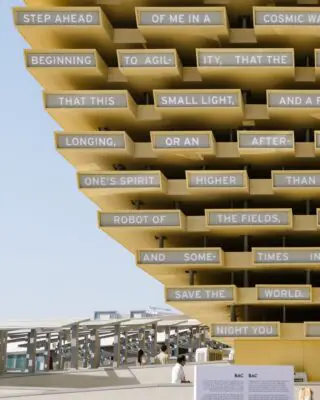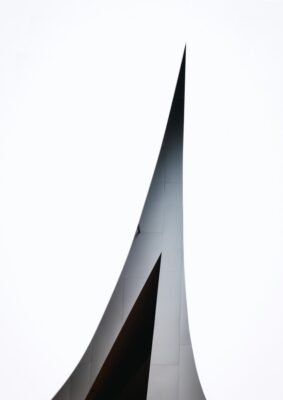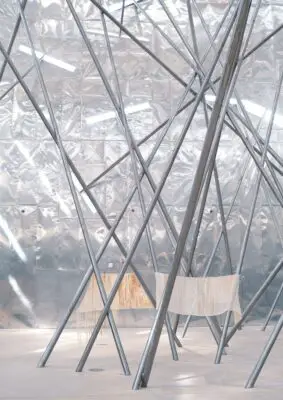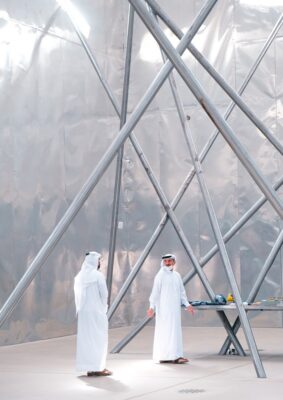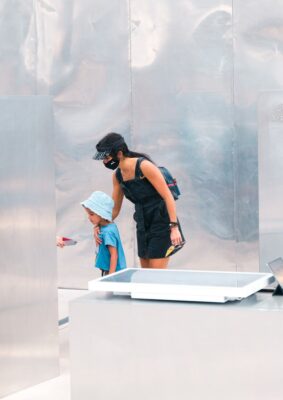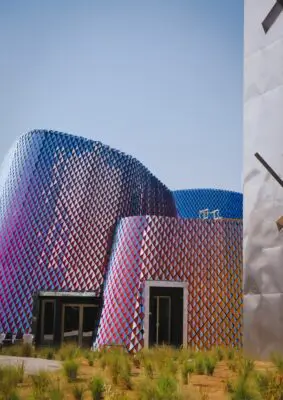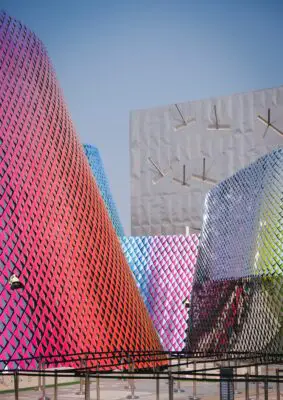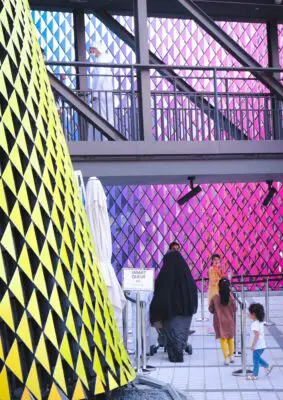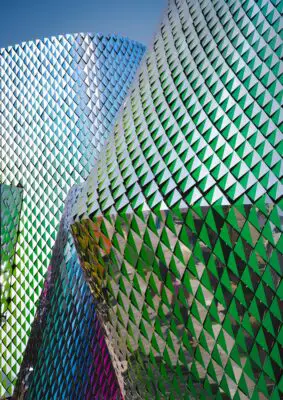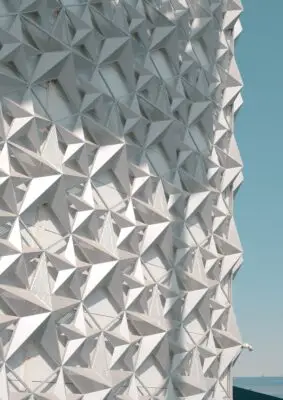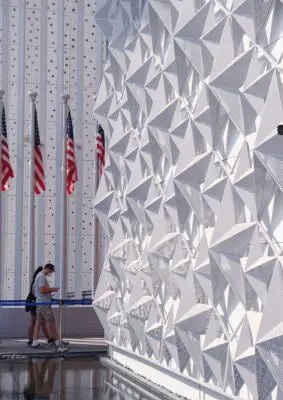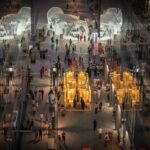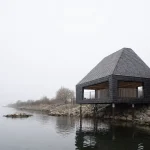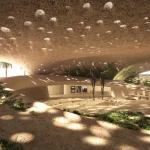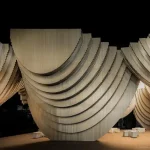Expo 2020 Dubai Pavilion Building Photos, Architects, UAE Architecture Design Project Images
Expo 2020 Dubai Pavilion Building Photos UAE
26 Feb 2022
Photos © Riccardo Rivano
Pavilions at Expo 2020 Dubai
Location: Dubai, UAE
Introduction
With the title “Connecting Minds, Creating the Future” the first Expo hosted in the Middle East has faced many challenges, not least due to the slippage of nearly a year compared to the expected date. In fact, Expo Dubai 2020 was inaugurated in Dubai on 1 October 2021.
The top-level organization is due to an exceptional effort made not only by the United Arab Emirates but also by the thousands of people who have worked intensely, often in difficult conditions due to Covid and the harsh climate.
The pavilions of the nations are divided between those “self-built” specifically for this Expo from the different countries, which are positioned on the perimeter of the three “petals” that make up the masterplan, and those housed inside the buildings made by Hopkins Architects in the spaces inside the petals. The pavilions are few less than 200, completely unique and different from each other. Each pavilion has its own communication, which is not always immediately manifest.
In fact, the architecture of each Expo is by definition temporary, provisional, ephemeral, and self-referential. There is no model or typology for the Expo pavilions. This means maximum freedom of design which very often results in avant-garde and attractive architecture, in which each country works according to its own criteria, its own taste, and according to the message it wants to convey. The architecture that results from these assumptions is a singular, engaging, original architecture with a huge possibility of choices and experience for visitors.
Expo 2020 will end in March 2022 and the area that hosted the event will turn into the “District 2020”, a large district for 145 thousand inhabitants characterized by sustainability, integration, innovation, and science. The district will reuse some of the thematic pavilions and a good part of the infrastructure transforming today’s Expo into a city of tomorrow.
UAE Pavilion
The UAE pavilion, designed by the studio of Santiago Calatrava, is certainly one of the most spectacular and successful pavilions of Expo 2020. It impresses with its quality, care, and pleasantness that it transmits in all its parts, including the evocative waiting and passage accommodations located at the base of the Pavilion.
The four-story pavilion was informed “by a falcon in flight” and is topped by a series of locally produced carbon fiber “wings” that can be closed to shelter the roof solar panels. The 15,000 square meters pavilion is composed of numerous exhibition areas, an auditorium, food, and beverage outlets, and VIP lounges and it has been designed to meet LEED Platinum sustainable building standards.
Singapore Pavilion
The Singapore pavilion impresses with its dominance of green. The theme of the project can be summarized by the national program which foresees that “the future will be the city in the green and not the green in the city”.
The pavilion is divided into an engaging path that culminates with the apex of the building from which a 360 ° view of the pavilion and surrounding installations opens up.
Morocco Pavilion
The theme of the Morocco pavilion is sustainability, represented by a palace with regular parallelepiped volumes
superimposed in raw earth. A long path presents the specific and sustainable products of the Moroccan tradition.
UK Pavilion
The UK requires a long zigzag climb to reach the interior of a horizontal conical volume, a compressed space that attracts attention to poems formed by the words that appear on the outer facade and internal walls. The poem pavilion features a breathtaking illuminated ‘message to space’ to which each of the expo’s anticipated 25 million visitors will be invited to contribute. The idea of the designer Es Devlin is to create a place where visitors from all over the world take part in a collective global project that showcases British expertise in a.i. technologies and poetry while transcending national identities.
Austria Pavilion
The theme of sustainability is central to most of the pavilions,that make it a manifesto. This is the case, for example, of the Austrian pavilion, composed like a village of cones that exploit natural phenomena such as thermal inertia and ventilation, to be able to guarantee real comfort in a desert climate without resorting to building systems.
Finland Pavilion
The Finland Pavilion is inspired by the thin white layer of the first snowfall that covers the Finnish landscape at the beginning of every winter. The Pavilion resembles a big white Arabic tent and its entrance was inspired by traditional nomadic culture. Two cultures meet in this way in an architectural concept. Inside the pavilion, a deep top lit gorge-like space welcomes visitors. Inspired by Finnish nature, this sculptural space brings people together in a memorable way. Its simple, pure forms clad with a curved wooden lattice surface reflect the celebrated heritage of Finnish Modernist architecture and design.
Kingdom of Bahrain Pavilion
The pavilion is conceived as a physical and spatial experience of density and the future possibilities of building in an increasingly dense world. Designed by Christian Kerez Zürich AG, it is imagined as an open plan space, submerged in the site and accessed through a ramp that creates a transition between the outer and inner worlds of the pavilion.
The structure of this central space is made of 126 columns 24m in height that join each other at several points throughout the height of the space. The columns support one another and support the roof, providing a poetic structure that demonstrates principles of connection and density in an exploration of the threedimensional possibilities inspired by geometric gypsum ornaments of traditional Bahraini architecture.
Pakistan Pavilion
Renowned artist Rashid Rana transforms the Pakistan Pavilion into one of the largest works of its kind. The artistic intervention, “Unity of All that Appears” comprises twenty-four thousand seemingly identical but all, in fact, unique pieces, fractionally different from each other in size and colour, meld together in harmony.
The façade of the pavilion conveys joy with its bright colours and is certainly among the most lively and colourful of Expo 2020, constituting the strength of the entire pavilion.
USA Pavilion
Photos by Riccardo Rivano
Expo 2020 Dubai Pavilion Building Photos / information received 260222 from Riccardo Rivano
Location: Dubai, UAE
Dubai 2020 Expo Pavilions
Dubai Expo UK Pavilion
Design: Es Devlin
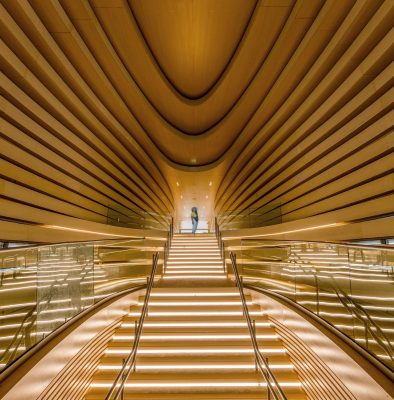
photo by Alin Constantin ; image courtesy of Es Devlin
Expo 2020 Dubai UK Pavilion Building
Singapore Pavilion At Expo 2020 Dubai
Design: WOHA
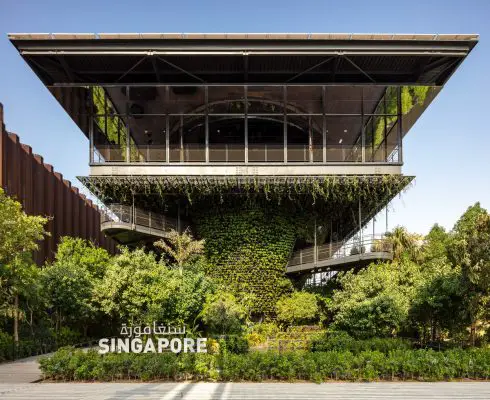
photo © Singapore Pavilion, Expo 2020 Dubai
Expo 2020 Dubai Singapore Pavilion Building
Sustainability Pavilion for Expo 2020 Dubai
Design: Grimshaw Architects
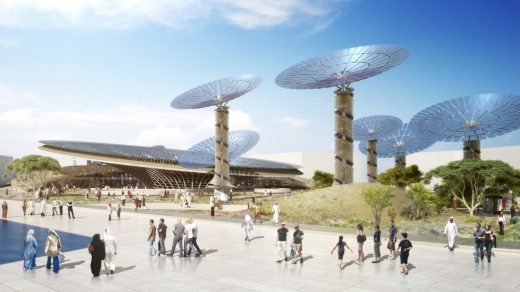
image courtesy of architects
Sustainability Pavilion for Expo 2020 Dubai
Dubai Expo Swedish Pavilion Building
Design: Alessandro Ripellino Architects, Studio Adrien Gardère and Luigi Pardo Architetti
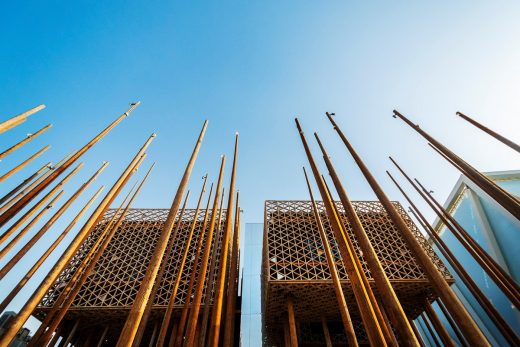
photo courtesy of Swedish government
Dubai Expo Swedish Pavilion Building
Dubai 2020 Expo Pavilions
Design: Santiago Calatrava, Foster + Partners, BIG and Grimshaw Architects
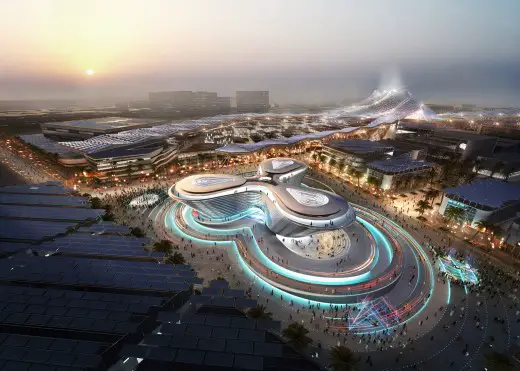
image courtesy of architects
Dubai 2020 Expo Pavilions
Dubai World Expo 2010 Masterplan
Design: HOK / Populous
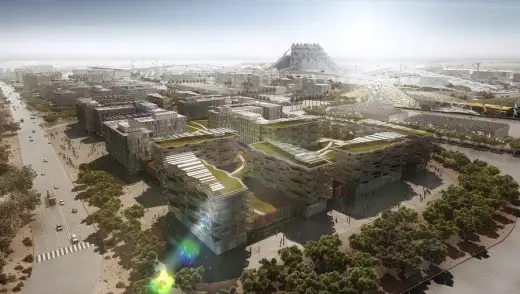
Dubai World Expo Masterplan
UAE Architecture
Hyperloop Pods and Portals
Design: BIG-Bjarke Ingels Group
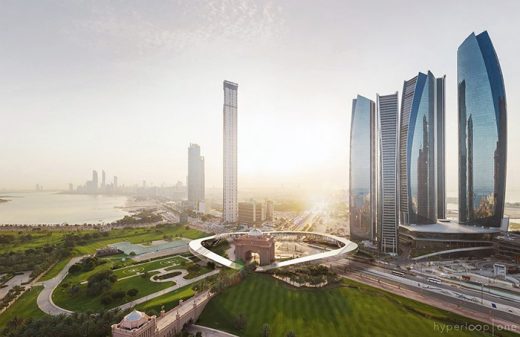
image from architects
Hyperloop Pods and Portals in Dubai
Architecture Tours Dubai by e-architect
Comments / photos for the Expo 2020 Dubai Pavilion Building Photos in UAE page welcome

